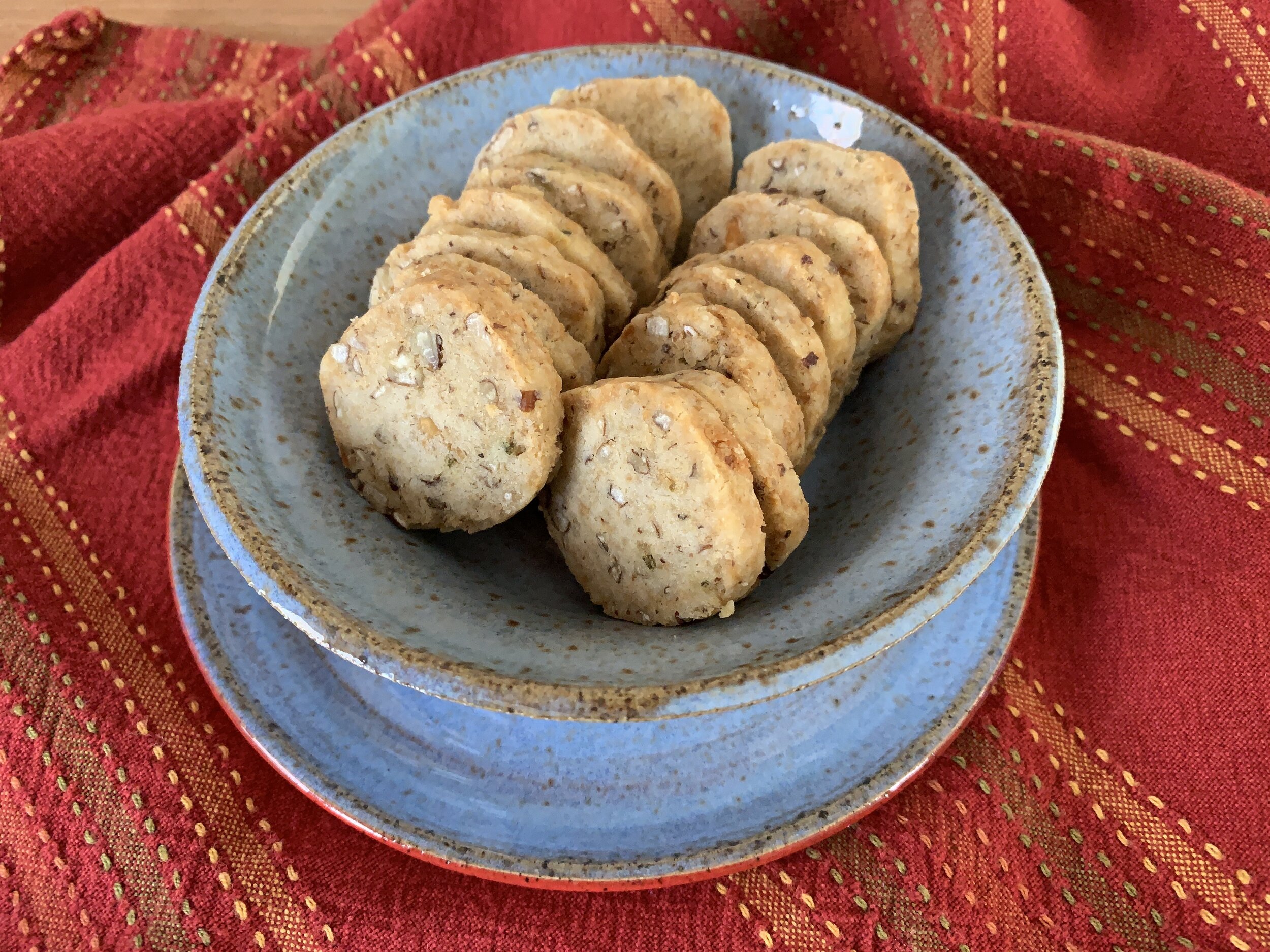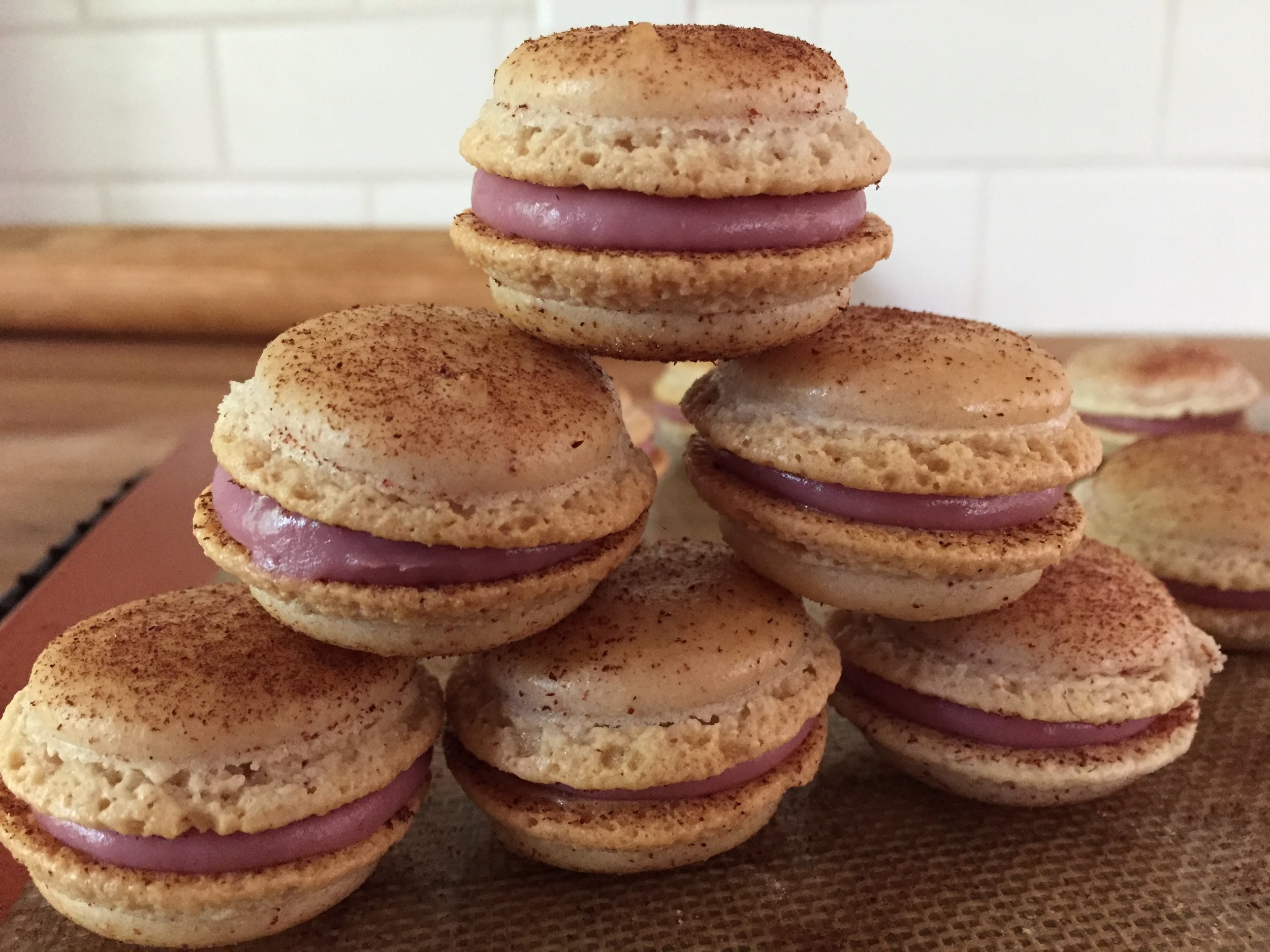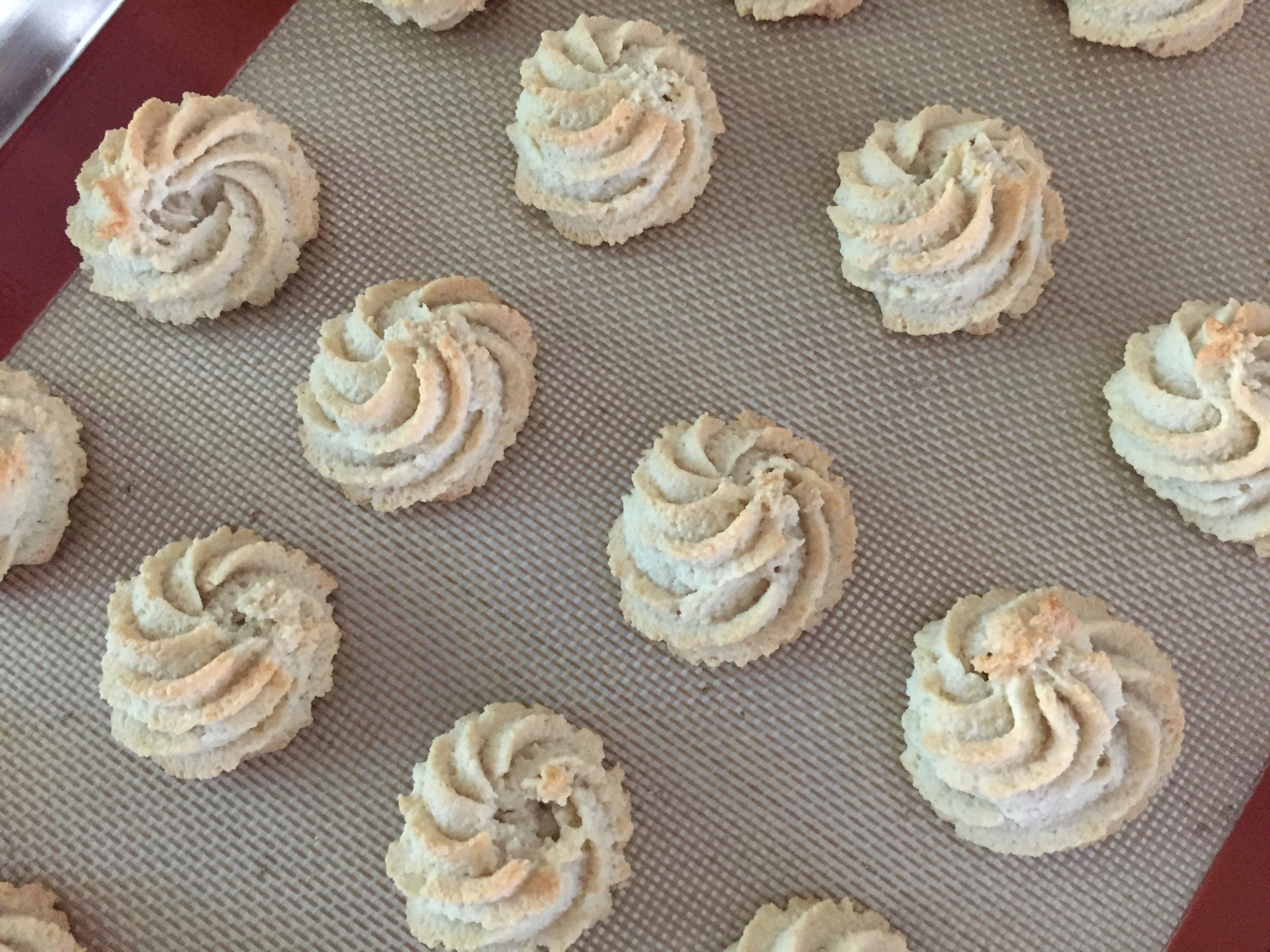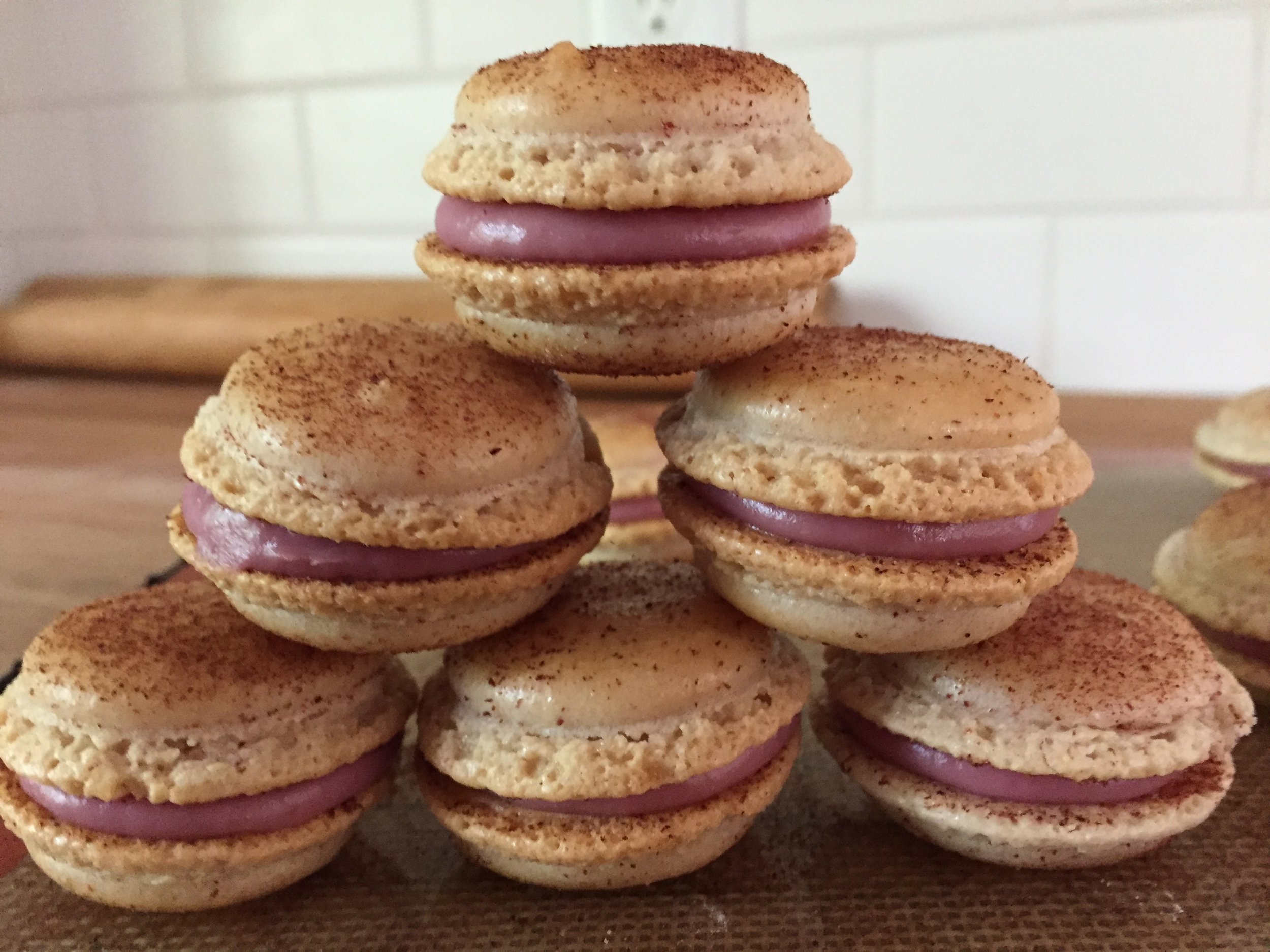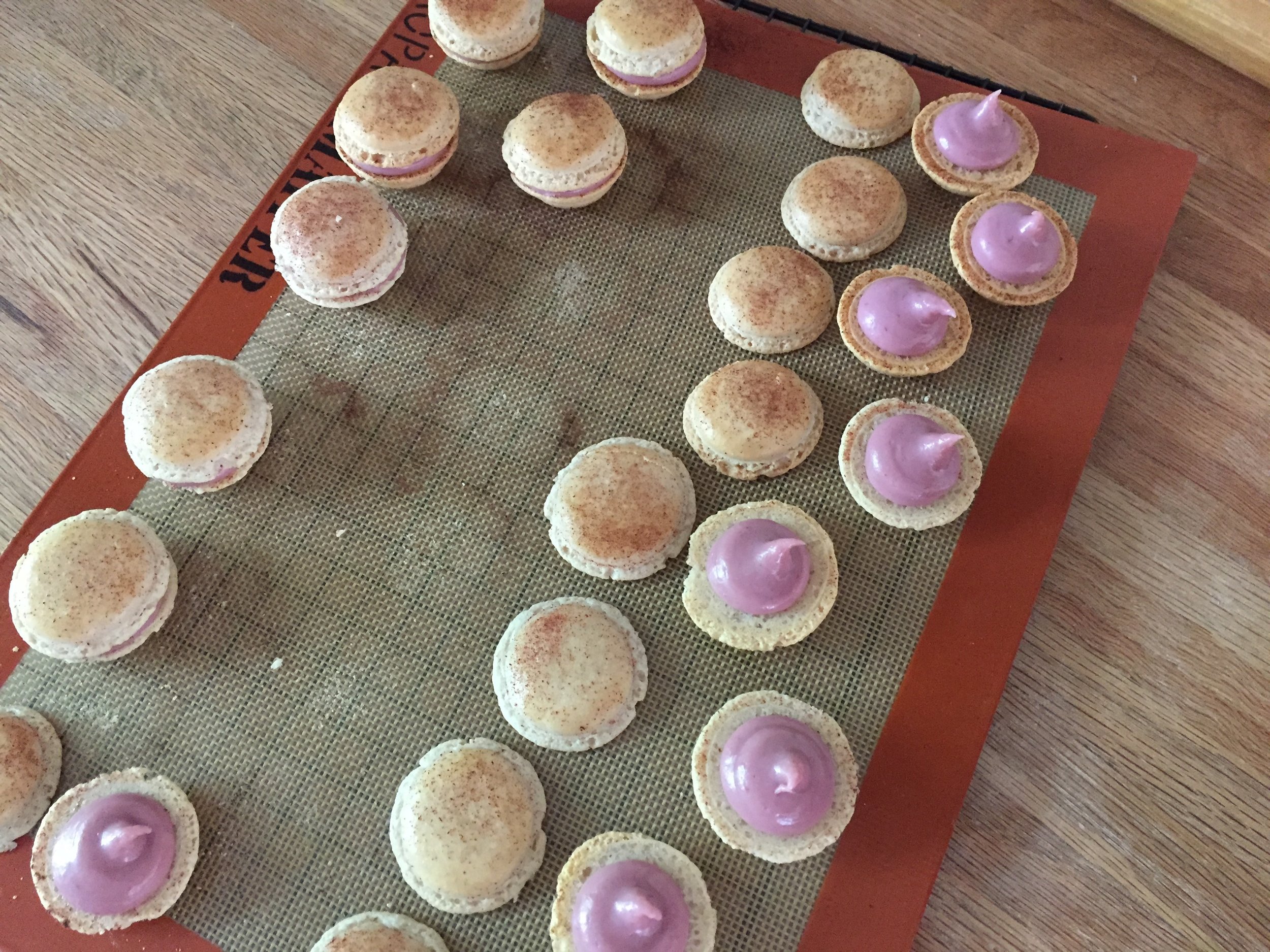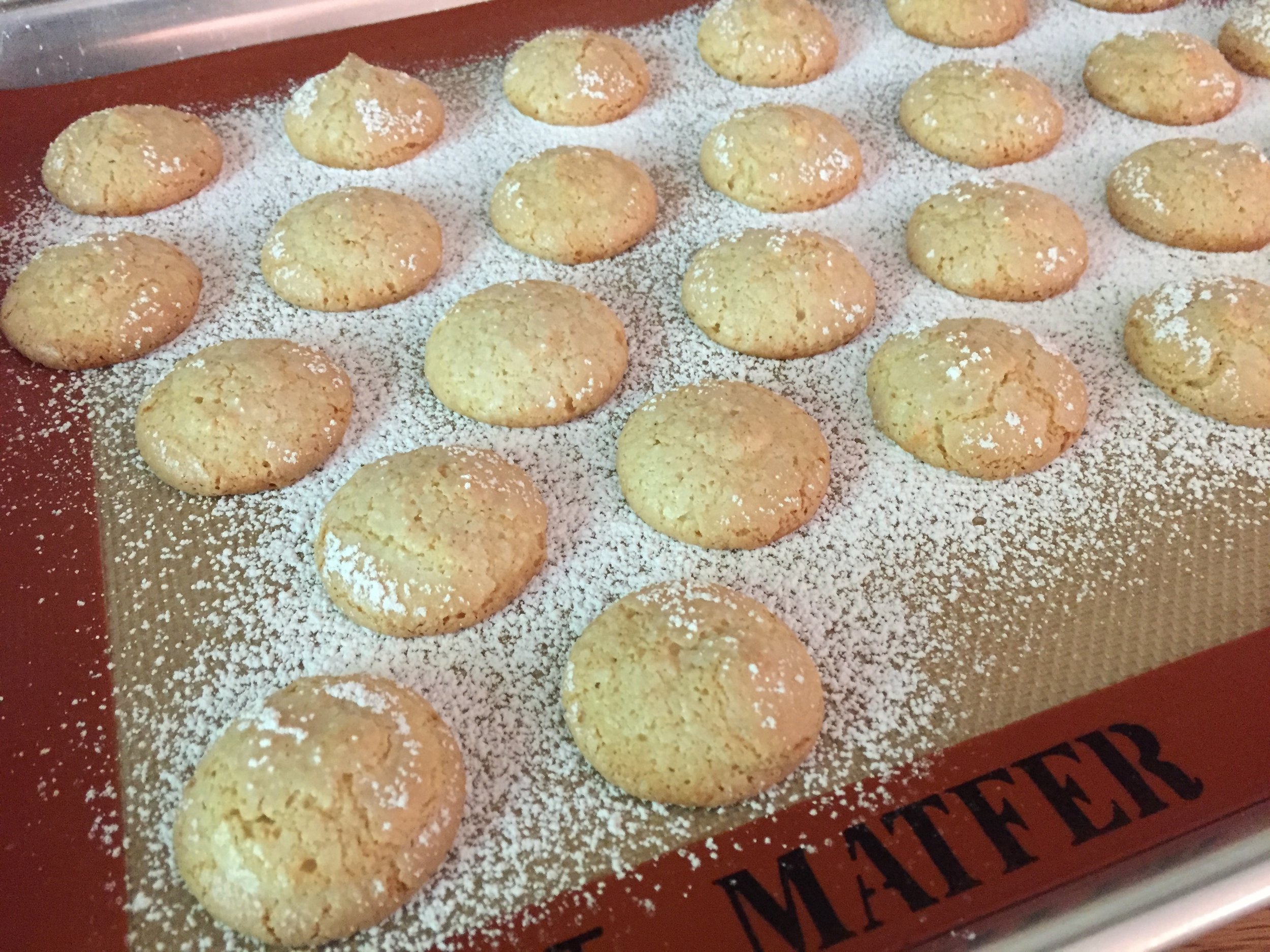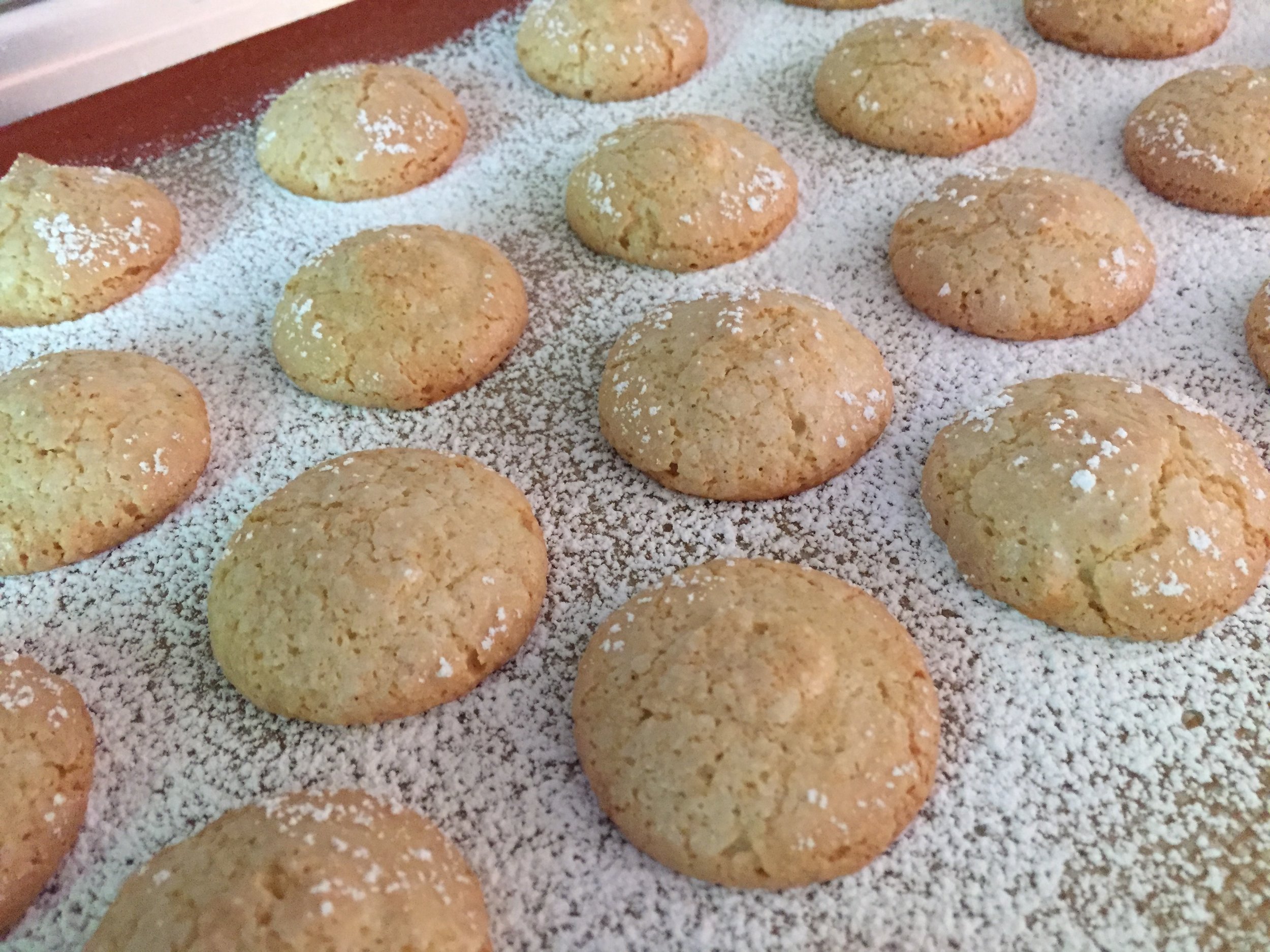Sablés au parmesan et pecan
/Cheese and nuts - mmmm, mmmm good!
Here’s the question: how about the real deal Parmagiano-Reggiano from The Cheese Lady along with toasty pecans combined in a luscious shortbread cookie, one of my favorite baked treats? A big YES from this corner of the planet.
Over the years I’ve made the occasional savory shortbread, a couple of my favorites being honey herbes de provence and nutty rosemary. Such wonderful marriages of sweet, salty and herby all rolled into one. So when I was presented with another savory take on the buttery, crumbly cookie I love so much, I had to give it a go.
This one comes from La Cuisine de Mercotte , a blog I was first made aware of several years ago thanks to Parisian friend Valerie, a classmate of mine (and a translating life saver in the practical kitchen!) during the basic pastry course at Le Cordon Bleu back in 2006. Val, an engineer by profession, had previously lived in Las Vegas for 5 years and speaks English like an American, so I was often able to turn to her for language assistance during those early days of incomprehension.
The blog is orchestrated/written by Jacqueline Mercorelli, (a.k.a. Mercotte) a well known French food critic, blogger and gastronome. Full of recipes, tips and techniques, it’s available in English too!
This Mercotte shortbread recipe calls for parmesan and black garlic, something I didn’t even know existed. Since I didn’t have that particular ingredient, why not use pecans instead!
Nothing fancy or difficult about this one folks. Make the dough, divide and log it up, wrap/chill then slice and bake when you’re ready. I had planned on baking these for a March 20th appetizer event, but since that was canceled due to the current health crisis, the logs went into the freezer to be baked at a later date. They’ll keep a good 3-4 months.
Get started by doing your mise en place: 160 g / 11.5 tablespoons unsalted butter, cubed and softened; 250 g / scant 2 cups all purpose flour; large pinch of salt and fresh ground pepper to taste; 150 g / 5.2 ounces grated Parmagiano-Reggiano; 60 g / ~1/4 cup lightly toasted pecans, cooled and finely chopped; have on hand a splash of heavy cream and 2 teaspoons of water..
Once you have everything ready to go (don’t forget to grate that cheese and toast/cool/chop those nuts!), place the butter, flour, salt and pepper in the bowl of a stand mixer fitted with the paddle attachment. Blend on low, adding the parmesan and pecans soon after and continuing to blend.
As the dough becomes more crumbly, stop the mixer, pick up a handful and see if it holds together. If still pretty crumbly, add a splash of heavy cream and 2 teaspoons of water. Continue to blend for a minute or two and test again. The dough should hold together. NOTE: after making this dough a couple of times, going forward I plan to routinely use the cream and water - it works!
Divide the dough into four portions and form each into a compact log about one inch in diameter (or a bit larger if you’d like) and about 7-8 inches long. Wrap snugly in plastic wrap and chill for several hours or overnight. Remember you can freeze them too!
The recipe yields about 65 cookies, depending on the diameter you choose.
When ready to bake, heat the oven to 400ºF. Line a half sheet pan (or two if baking all the dough in one go) with parchment paper. Slice the log(s) into 1 cm slices and place on the prepared sheet(s).
Bake 8-10 minutes until golden brown. Cool and enjoy.
Set out your own appetizer platter with toasted nuts, assorted cheeses and jams to go along with these buttery gems. I think you’ll like them!
Stay safe, shelter in place and be well.

